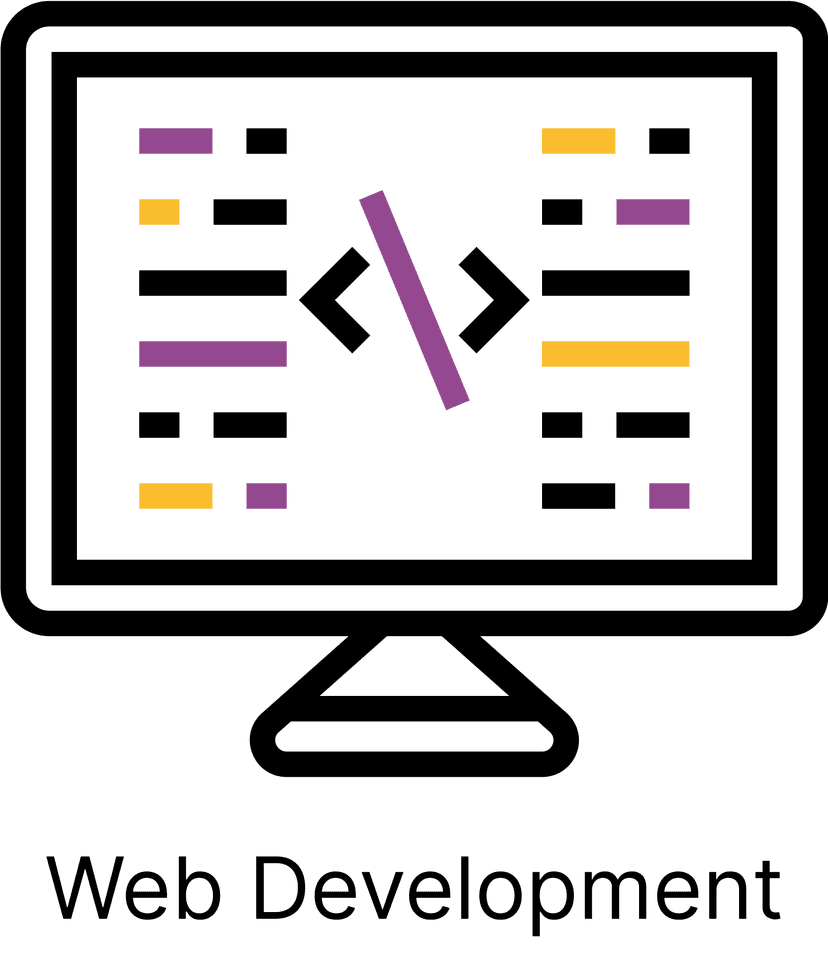Web Development

What is web development?
Definition
Web development is the process of creating, designing, and maintaining websites and web applications. It involves various aspects such as web design, web programming, database management, and web server configuration.
Analogy
Imagine building a house. The architect designs the layout, the interior designer plans the aesthetics, and the construction workers build the structure. Similarly, in web development, the web designer creates the visual layout, the web developer writes the code, and the database administrator manages the data storage.
In other words
Web development is like constructing a house in the digital world, where different professionals work together to create functional and visually appealing websites and web applications.
Why is web development important?
It's one thing to know what web development is, but that is worthless if you don't know why you should know what a code repository is in the first place. Let's break down the importance of this tech term based on two high-level categories. We'll walk through an explanation as well as provide a score, 1-10, that shows you how much you should care about web development.
Pre-Product: 8/10
If you do not have a product yet, web development is essential for creating your online presence. A well-designed and developed website can help you showcase your startup idea, attract potential customers and investors, and build credibility for your business. In the pre-product stage, understanding the basics of web development can help you make informed decisions when hiring web developers or choosing the right technology stack for your project.
Live Product: 8/10
If you have a live product, web development becomes even more critical. A well-maintained and updated website ensures that your product runs smoothly, offers a great user experience, and stays secure from potential threats. As your business grows, web development allows you to scale your website, add new features, and improve performance to meet the increasing demands of your users.
Examples of web development
So you know what web development is, by definition. You know if you should care about it or not depending on your situation as a business/company/product. To dig in deeper, we will walk through some tools and processes so we can make sure you really have a solid grasp on web development.
Front-end Technologies
Front-end web development involves creating the visual and interactive elements of a website. Some popular front-end technologies include HTML, CSS, and JavaScript. HTML (HyperText Markup Language) is used to structure the content, CSS (Cascading Style Sheets) is used to style the content, and JavaScript is used to add interactivity and dynamic features.
Back-end Technologies
Back-end web development focuses on server-side operations, such as handling user requests, processing data, and managing databases. Some popular back-end programming languages and frameworks include PHP, Python (Django, Flask), Ruby (Ruby on Rails), and JavaScript (Node.js, Express).
Content Management Systems (CMS)
Content Management Systems (CMS) allow non-technical users to create, edit, and manage web content without writing code. Some popular CMS platforms include WordPress, Drupal, and Joomla. These platforms provide a user-friendly interface for managing website content and offer various plugins and themes for customization.
Key Takeaways:
- Web development is the process of creating, designing, and maintaining websites and web applications.
- For startups without a product, web development is crucial for building an online presence and attracting potential customers and investors.
- For startups with a live product, web development helps maintain, update, and scale the website to meet user demands and ensure a great user experience.
- Examples of web development include front-end and back-end technologies, and content management systems.

